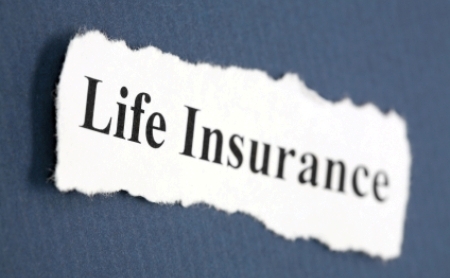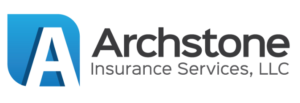 What Types of Life Insurance are Available?
What Types of Life Insurance are Available?
Determining which type of life insurance product will best serve your needs is very important. Life insurance isn’t a “one size fits all” product so you must start by determining what goals you would like your life insurance to serve. There are two main types of life insurance – Term Life Insurance and Cash Value Life Insurance. These products differ in many ways from cost to features. After determining your life insurance goals, you may simply require a term life insurance policy that provides temporary coverage for a specified period of time. On the other hand, you may have circumstances that require coverage that lasts your entire lifetime or you may simply desire a policy with a cash savings feature. These circumstances would be best served by a cash value policy. In order to determine which type of policy would best suit your needs, you should consult with a life insurance agent who can explain the benefits and drawbacks of each type of insurance product you might be considering. There are several types of insurance products within the term life and cash value life families to choose from.
Term Life Insurance
Level Term Life Insurance
There is truly no easier and more cost-effective way to protect your family than with term life insurance. Term life insurance rates have steadily declined over the years making it more affordable than ever to protect your family with ample coverage. Level term life insurance offers level premiums that are guaranteed to to not increase for the duration of the term that you choose.
The purpose of term life insurance is to provide coverage for a specific period of time such as 10,15,20,25 or 30 years. Term life insurance is an excellent product for those who want coverage until they retire, their home is paid off, their youngest child is no longer financially dependent or any other life milestone of their choosing. Term life insurance policies are easy to understand and don’t have as many “moving parts” as some permanent products. You basically pay a level premium for the duration of the policy and your beneficiaries are paid a death benefit if you die within the term.
Click Here for Sample Term Life Insurance Rates
Most term insurance products also contain a convertibility feature. This feature allows a term policyholder the opportunity to convert their term policy to a permanent policy without having to go through medical underwriting again. In other words, you can convert at the health class you were originally rated. This feature is important if your health deteriorates and you want to lock in the higher health rating or if you eventually would like to purchase permanent insurance and you are in good health but can only afford term coverage at the moment.
Return of Premium Term Life Insurance
You can also purchase term insurance with a return of premium feature. The return of premium feature makes these policies substantially more expensive than traditional level term policies. Basically, these policies will return all of the premium that you paid into the policy as long as you keep the policy in force for the entire term. For instance, if you have a 20 year return of premium term policy that requires you to pay $2,000 per year for coverage, you will receive $40,000 back from the insurance company at the end of the term. It is important to note that these policies will usually return no premiums if you walk away in the early years of the policy and might only return a graded percentage of your premium if you walk away later in the policy. These policies should be held for the entire term to reap their intended benefits.
Cash Value Life Insurance
What is Cash Value Life Insurance? – Some situations might call for permanent insurance coverage. Cash value life insurance allows you to cover yourself for your entire life. It also offers a cash value savings component that grows tax deferred allowing you to borrow from your policy in the future. In some cases, you can access the cash value in your policy tax-free. Cash value life insurance is quite a bit more expensive than term insurance but it has features that term insurance does not. Permanent products are best for those with permanent needs such as estate tax planning, business continuity planning, charitable giving or funding the care of child with special needs after the death of a parent. There are also cases where cash value life insurance can play an important role in retirement planning. An experienced agent will be able to tell you if cash value life insurance would be a good fit for you. There are several types of cash value life insurance.
Whole Life Insurance
Whole life insurance offers level premiums that are paid for life and a guaranteed death benefit. Cash values usually increase at a constant rate and will eventually equal the face value at age 100. Contracts can be either participating or nonparticipating. Policies that are participating will allow the policyholder the opportunity to receive regular dividends that can be used to several different ways. They can be received as cash, used to purchase fully paid up life insurance in small increments, reduce next premium payment or leave on deposit to accumulate with interest. Although dividends are not guaranteed, some insurance companies have paid regular dividends for over 100 years. Although the whole life insurance products can be somewhat more expensive and rigid in their design compared to a universal life policy, they often have the predictability and stability that many people are looking for in an insurance product.
Universal Life Insurance
Universal life insurance offers flexibility in premiums, death benefit and investment options but in most cases lacks the guarantees that whole life insurance offers. Yearly premiums on a universal life policy are used to pay the various expenses associated with the policy and whatever is left over will be invested or credited with interest based on the type of policy. The expenses associated with a universal life policy are not guaranteed. The insurance company may change the pricing elements subject to limits set forth in the policy resulting in higher overall expenses for the policy. Having said that, universal life insurance offers policyholders the opportunity for greater cash value growth and more flexibility than whole life insurance. How the cash value in a universal life policy is credited depends on the type of policy.
Current Assumption Universal Life (CAUL) – Current assumption universal insurance life pays an interest rate on your cash value that is determined by the insurance company. This rate can change yearly depending the company’s investment returns and the overall interest rate environment. This is a very conservative approach to cash value growth.
Indexed Universal Life Insurance (IUL) – Indexed universal life insurance offers cash value growth based on stock market movements without directly investing in stocks or mutual funds. The growth of your cash value can be based on the performance of various stock market indices depending on what the insurance company offers for choices, but most commonly it is the S&P 500 that is used. These polices allow you to participate in a percentage of the gains in an index (participation rate) up to a certain amount (cap rate). Your downside is limited (floor) so that in most cases you will not lose value. For example, an IUL policy has a participation rate of 100%, a cap of 10% and a floor of 0%. If the S&P 500 increases by 14% during your policy anniversary year, what percentage would you be credited? You would first multiply the participation rate by the return on the S&P 500 (100% x 14% = 14%). You would then compare that value to the cap of 10%. Since 10% is the most you can be credited in a year, that would be your return. Although you wouldn’t get the entire 14% return on the S&P 500, you would still get a 10% return credited to your cash value. But on the flip side of that, if the S&P 500 returned -14% for the period, the cash value of your account would not lose value based on the 0% floor (you would still have the regular costs associated with holding the policy). IUL gives you an opportunity for decent market gains while protecting your downside. Also, your gains are always locked in so they can’t be taken away if the markets suffer a substantial loss. IUL policies can provide more growth than CAUL when markets do well.
Variable Universal Life Insurance (VUL) – Variable universal life insurance allows the policyholder the opportunity to invest their cash value directly into mutual funds. The cash value is kept in a separate account and can be allocated across many different mutual funds. With this product, the cash value is subject to the fluctuations of the markets compared to more conservative products such as CAUL or IUL products. Variable life insurance also carries investment management fees charged by mutual funds in addition to the normal insurance policy fees you are expected to pay.
Guaranteed Universal Life Insurance (GUL) – Guaranteed universal life insurance is a product that is geared toward a guaranteed death benefits as opposed to cash value accumulation. A guaranteed Universal life product will specify a target premium that needs to be met each year to keep the policy from lapsing. As long as the target premium is met, the policy will stay in force and the death benefit will be guaranteed. Unlike most other universal life policies, guaranteed universal life over the long haul will usually have no cash value at all. This might not be important to someone who cares more about the death benefit rather than building cash value. The premiums for these policies are lower than other permanent insurance products and you can also specify what age you want the guarantee to last such as to age 95, 100 or even 121. When looking at a GUL, keep in mind that longer guarantees mean higher premiums and missing premium payments can have a devastating effect on the policy compared with other universal life insurance products.
Click Here for Sample Guaranteed Universal Life Insurance Rates
No Medical Exam Life Insurance
There are also term and whole life insurance products that do not require a medical exam. Read more about those products here.
To see what type of life insurance might best match your goals, click the link below.
Which Type of Life Insurance is Right for You?
Please Contact Us With Any Questions
Error: Contact form not found.

